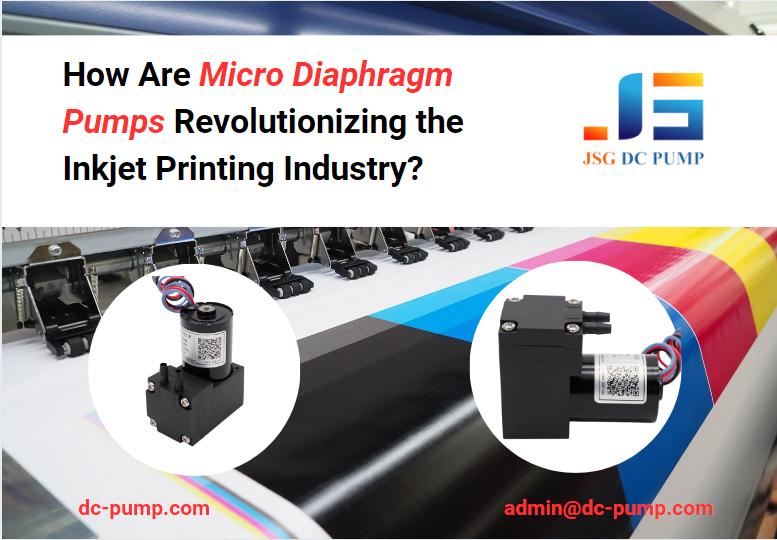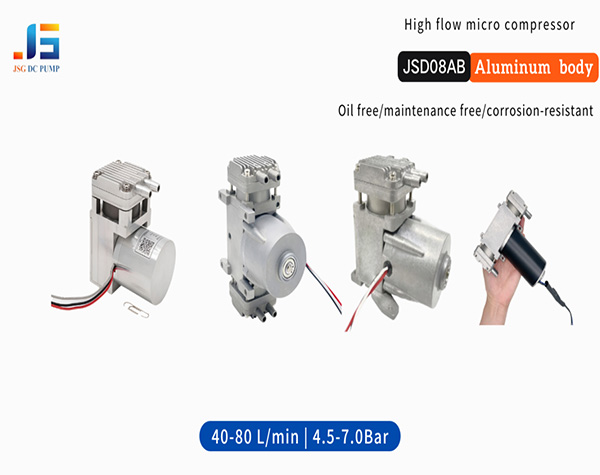Table of Contents
- Why Are Inkjet Printers So Demanding on Fluid Delivery?
- Understanding Inkjet Printing: Precision in Every Drop
- Why Choose Micro Diaphragm Pumps for Inkjet Applications?
- How Does the Diaphragm Pump Work in a Printer?
- What Printing Applications Use Diaphragm Pumps?
- Spotlight: BD-03W Pump for Inkjet Systems
- Case Study: BD-03W in Industrial Coding Printer
- How Do Diaphragm Pumps Support Ink Recirculation Systems?
- Are There Maintenance or Longevity Concerns?
- What About Customization?
- Conclusion
In the high-precision digital printing world, ink delivery systems must operate with consistency, reliability, and absolute cleanliness. As a technician at Shenzhen Jingsuguang Technology Co., Ltd., I’ve worked closely with global printer manufacturers, helping them solve one of their most critical challenges: how to move ink cleanly and accurately from reservoir to nozzle.
Micro diaphragm pumps are quietly powering this transformation, and in this post, I’ll show you exactly how.
1. Why Are Inkjet Printers So Demanding on Fluid Delivery?
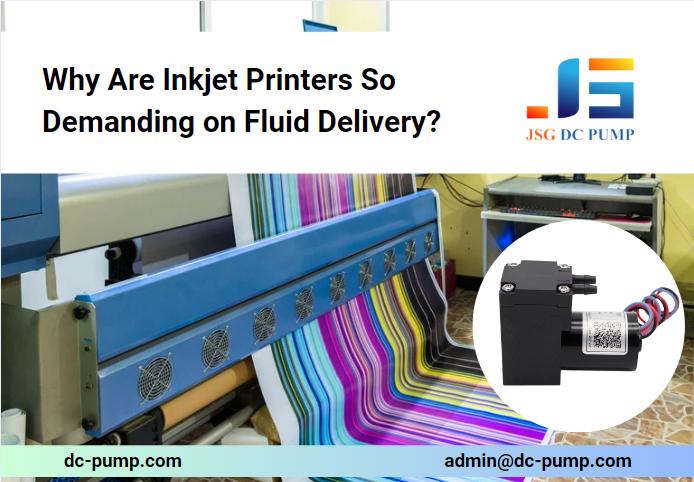
Inkjet printers, especially industrial models, require fluid control that’s almost surgical in precision. Fluctuations in flow, trapped air, or incorrect pressure can result in nozzle clogging, splatter, inconsistent color density, or costly reprints.
The printing environment adds to the challenge. In many factories, printers are expected to operate around the clock, under varying temperatures and ink viscosities. Reliability is non-negotiable.
2. Understanding Inkjet Printing: Precision in Every Drop
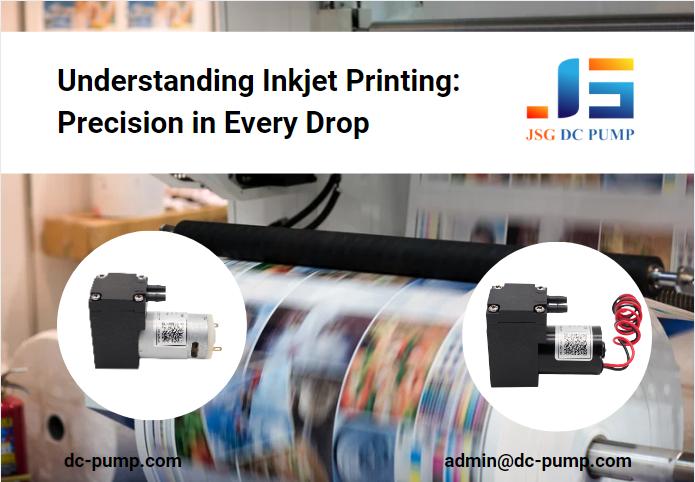
Inkjet printing technology works by propelling tiny droplets of ink directly onto the substrate without contact. There are two main types of inkjet technologies:
Thermal Bubble (common in office printers): Heats ink to form a vapor bubble that forces ink out.
Piezoelectric (used in industrial and textile printers): Applies mechanical stress to eject ink precisely.
In both methods, the pressure and flow must be precisely regulated to ensure accurate droplet size and velocity. Micro diaphragm pumps play a key role in achieving this control, especially in systems using pigment-based or UV inks that are prone to sedimentation.
3. Why Choose Micro Diaphragm Pumps for Inkjet Applications?
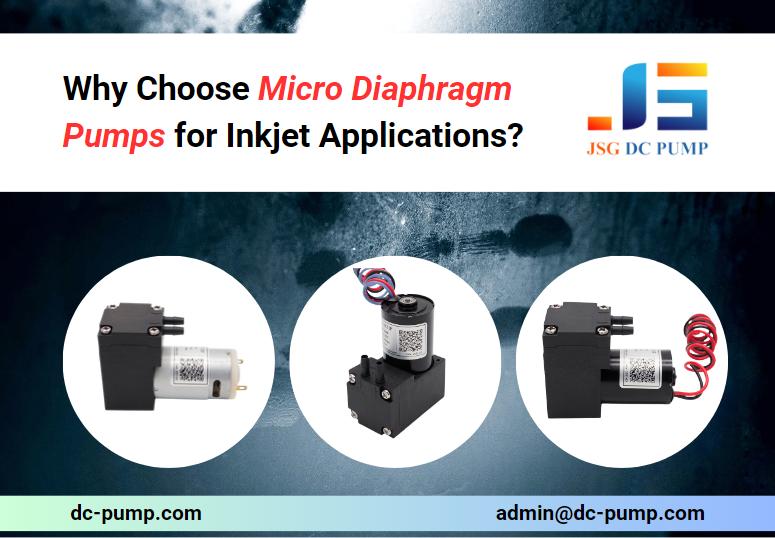
Compared to peristaltic or gear pumps, diaphragm pumps provide cleaner operation, better chemical resistance, and more precise metering. They’re oil-free, compact, and generate less noise and vibration.
At JSG, we engineer our pumps to be:
Compatible with various ink chemistries (solvent-based, UV, aqueous, pigment)
Stable under long-term operation
Customizable in flow, voltage, and size
Quiet enough for both factory and retail environments
4 . How Does the Diaphragm Pump Work in a Printer?
The pump uses a flexing diaphragm driven by a motor to pull ink into a chamber and push it out through check valves. This process creates a steady, pulsation-minimized ink flow that’s essential for modern high-resolution printing.
The lack of sliding seals also means fewer leak points and longer service life.
5. What Printing Applications Use Diaphragm Pumps?
We’ve supplied micro diaphragm pumps for:
Wide-format printers – Posters, signage, banners
Textile printers – Fabric printing with pigment or reactive inks
Coding & marking machines – Date, batch, and QR code printing on bottles and boxes
Digital label printers – Roll-to-roll printing systems
3D material jetting – High-precision resin deposition
Each application has different requirements for pressure, compatibility, and size—and diaphragm pumps adapt beautifully to each.
6. Spotlight: BD-03W Pump for Inkjet Systems
One of our most widely adopted solutions is the BD-03W micro diaphragm pump. It is compact, durable, and specifically designed for ink delivery in digital print systems.
Technical Specifications:
Voltage: 12V DC
Current: 0.3A
Max Flow: 400–700 mL/min
Vacuum Capability: -30 kPa
Motor: Brushless (5000 hours lifespan) or brush (1000 hours)
Noise Level: ≤50 dB
Material Compatibility: EPDM, FKM for aggressive ink resistance
Weight: ~120–140g
We also support custom configurations from 0–1.5 L/min flow and 3V–24V operation with weights ranging from 18g to 500g.
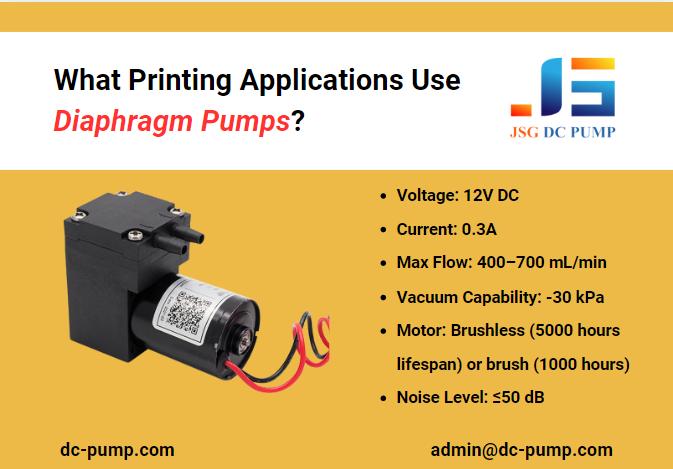
7 . Case Study: BD-03W in Industrial Coding Printer
One of our industrial clients—a manufacturer of high-speed packaging lines—needed a small, silent pump for their continuous inkjet coding system. Their requirements:
Compact size to fit tight enclosure
Precise flow at 500 mL/min
Stable vacuum of -30 kPa for ink degassing
Long service life to minimize downtime
We recommended the BD-03W (12V, 0.3A) with a brushless motor. After 8 months of field operation, the client reported:
Zero pump failures across 40 installed units
Improved printhead uptime
Reduced maintenance from bi-weekly to monthly
Significantly lower ink waste due to better flow control
This case demonstrates how diaphragm pumps are not just passive components—they actively improve system efficiency.
8. How Do Diaphragm Pumps Support Ink Recirculation Systems?
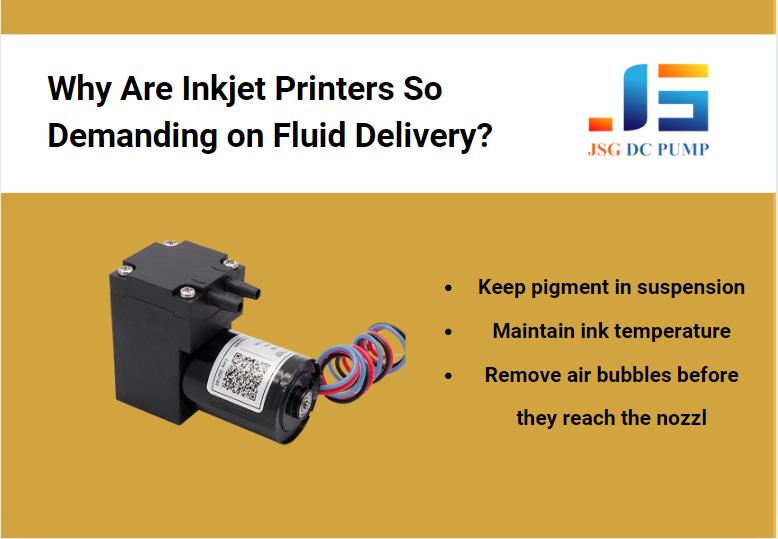
Recirculation systems are crucial in industrial inkjet printers. They:
Keep pigment in suspension
Maintain ink temperature
Remove air bubbles before they reach the nozzle.
Micro diaphragm pumps are ideal for this because they gently maintain vacuum or low-pressure loops, ensuring smooth ink circulation without creating foam or turbulence.
9. Are There Maintenance or Longevity Concerns?
Our pumps are engineered for minimal maintenance. Key benefits:
No oiling or lubrication required
Dry-run capability in case of ink interruption
Simple diaphragm replacement without special tools
Many of our customers run pumps like the BD-03W for over 5000 continuous hours with just occasional flushing and filter checks.
10. What About Customization?
Every printer is different, and we understand that. At JSG, we offer:
Custom connectors and mounting options
PWM or analog speed control
Ink-specific diaphragm materials
Integrated sensor ports for smart monitoring
Our engineers often co-develop pump modules with OEMs to accelerate time-to-market.
11 . Conclusion
Inkjet printing is a technology of precision, sion—and microdiaphragm pumps are a key enabler of that precision. From ink delivery to circulation, our pumps help print systems run cleaner, longer, and more accurately.
At Shenzhen Jingsuguang Technology Co., Ltd., we’re proud to power some of the most advanced printers in the world. Whether you’re printing on packaging, textiles, or electronics, our pumps are here to support your innovation.
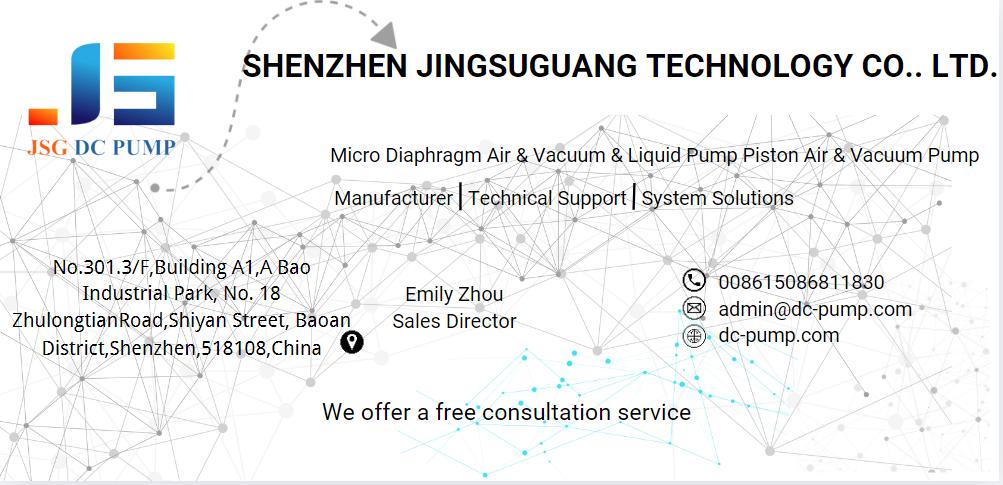
📧 Contact us: admin@dc-pump.com
🌐 Visit: dc-pump.com



